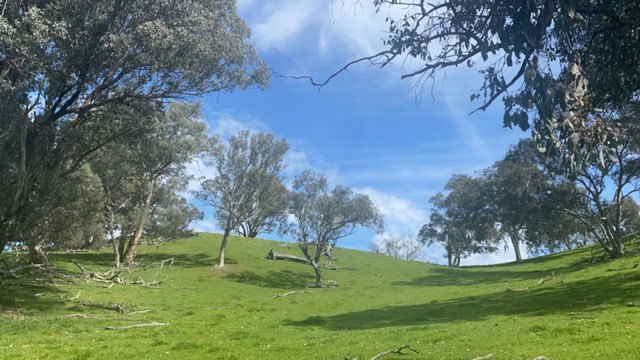Will the new EPBC Act be better for nature and developers?
Author: Lawrence Smith, Executive Director – Commercial
November 13, 2025
News & Insights
Australia’s environmental laws are on the cusp of their most significant overhaul in 25 years. The Environment Protection Reform Bill 2025, introduced to Parliament at the end of last month, represents the Australian Government’s final response to the 2020 Samuel Review of the Environment Protection and Biodiversity Conservation Act 1999 (EPBC Act).
The Government’s stated aim with this reform package is to deliver stronger environmental protections and a focus on restoring nature, while streamlining approvals for projects critical to Australia’s economic future.
While it’s not yet a done deal, there are some positives for the environment and for developers. Here we highlight some of the key areas of the Bill that our experts are monitoring and helping our clients prepare for.
Wins for nature?
National Environmental Standards:
A new power will be introduced for the Minister to make, vary and revoke legally-enforceable national environmental standards that set clear, measurable outcomes for the environment. Decision-makers will be required to apply these standards in assessments and approvals, aiming to create a more predictable and transparent system. The standards apply to bilateral agreements too, with State and Territory processes only be accredited if they meet the standards.
The first draft standards for Matters of National Environmental Significance (MNES) and Environmental Offsets have been published and are open for consultation until January 2026.
We don’t have the full picture yet but overall, the setting of these standards should contribute to improved nature outcomes.
Unacceptable impacts:
The Bill introduces definitions for unacceptable impacts on the environment, which is not defined in the existing legislation. An impact considered unacceptable under the new rules would include anything that causes or is likely to cause loss, damage or alteration to heritage places, impairs or is likely to impair the viability of or damages critical habitat of threatened species and other criteria related to wetlands, water resources and the Great Barrier Reef. Unacceptable impacts must be avoided or mitigated and cannot be offset.
These definitions should now mean proponents are quickly refused for projects that are considered too damaging to the environment. However the definitions are subjective and likely to be difficult to measure, which still leaves the door open for interpretation.
Net gain:
A significant change when it comes to offsetting is the move from “no net loss” to “net gain” to ensure developments result in overall improvements for nature. Projects will have to pass a currently undefined “net gain test” then proponents can meet their obligations by delivering their own on-ground restoration project or by contributing to a new Restoration Contributions Special Account, which funds ecological recovery initiatives.
This is an important step forward for the environment as it means offset activities must actively restore biodiversity rather than just prevent further damage. As offset experts, we are keen to see the detail of how net gain is measured and also how the new restoration fund pathway will be applied and delivered.
Nature Repair Market credits:
The Bill also includes provision for offsetting obligations to be met with biodiversity certificates created under the Government’s recently-launched Nature Repair Market (NRM) scheme. This is a departure from the original intent of the NRM so the Nature Repair Act will be amended to allow for credits to be used for environmental offsetting. This will be done by adjusting the methodology determinations and specifying any additional requirements that a biodiversity certificate must meet to be used for an environmental offsetting purpose.
The ecological rigour of the NRM is very high so the ‘nature positive’ outcomes from this approach would be beneficial for the environment. We would expect that bringing compliance buyers into the NRM will also help accelerate the market and build confidence to scale voluntary participation from investors and companies looking to go beyond compliance.
Certainty for developers?
For developers, the goal is certainty – of the pathways available to them, of the overlaps with state rules, of timelines and processes. Will this reform provide that much-needed clarity?
Minister Watt has consulted widely with industry groups and improving economic productivity is a key goal of the reform, but many details are still lacking at this stage and the Bill also leaves room for minister discretion in decision-making which means future application of the rules will not always be clear cut.
There are several aspects of the Bill that will streamline processes for proponents, addressing a key frustration with the current legislation.
This includes a fresh approach to bioregional plans, which allow a region to be mapped to include both development zones and conservation zones, as well as areas that fall in-between, so it is clear where the ‘go’ and ‘no go zones’ are.
The Bill also amends assessment and approvals pathways by consolidating three existing pathways into a single streamlined pathway, allowing for change of assessment pathway and allowing certain minor preparatory works to start (with the consent of the Minister) while the decision is still being assessed.
While there are benefits for developers on the horizon, there will likely be increased complexity in the short-term while developers come to terms with the new rules and deal with projects already involved in the process.
What’s next?
After passing through the House of Representatives, the Bills have been referred to the Senate Standing Committee on Environment and Communications for inquiry and report by 24 March 2026.
However the Government is keen to get the reforms approved quickly so the Minister will likely be working hard to set up debate for the final sitting week of the year, commencing 24 November.
So we might be looking at new environmental laws just in time for Christmas!



